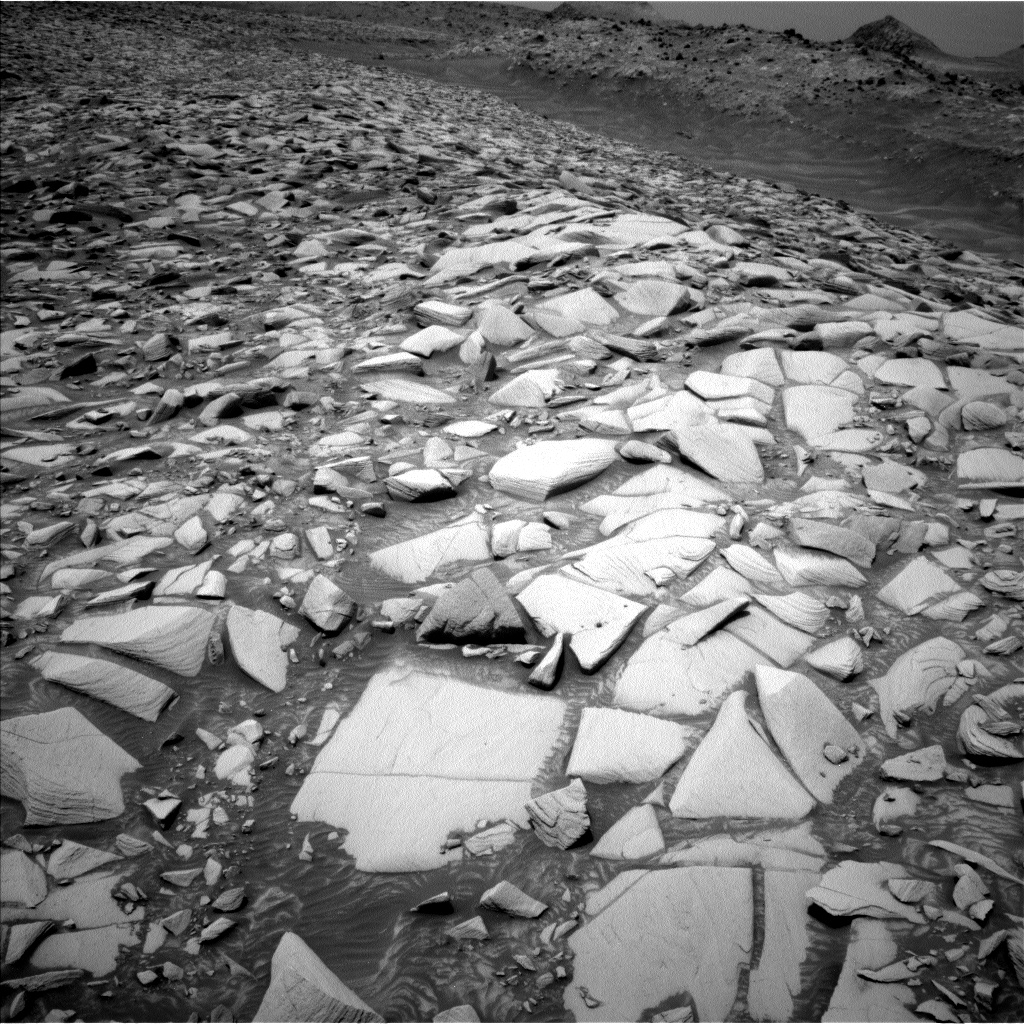Curiosity Rover’s Expedition on the Western Frontier of Gediz Vallis
NASA’s Curiosity Rover has been on an extraordinary journey across the Martian landscape, and its latest expedition takes it along the western edge of the upper Gediz Vallis channel. This ambitious mission, part of NASA’s ongoing exploration of the Red Planet, aims to unravel the mysteries of Mars’ geological history and its potential to support life.
In recent weeks, Curiosity successfully navigated its way out of the Gediz Vallis channel, an achievement that marks a significant milestone in the mission. Upon exiting, the rover turned its attention northward to capture images of the backside of geological deposits previously examined on the channel’s eastern side. This strategic maneuver is part of a broader initiative undertaken by the Channel Surfers working group, a dedicated team of scientists and engineers focused on understanding the Martian terrain.
The main goal of this exploration is to gain insights into the geometry, nature, and evolution of Mars’ landforms. By studying these features, scientists hope to piece together the planet’s climatic and geological history, providing clues about the conditions that once prevailed on Mars. This information is crucial for understanding the planet’s potential to harbor life, both in the past and possibly in the future.
Navigating the Martian landscape is no easy task. The terrain is often uneven and unpredictable, posing challenges for the rover’s movement. The rover planners, however, are experts at charting safe and efficient routes for Curiosity. They meticulously analyze every aspect of the terrain, ensuring that the rover can traverse the surface without incident. This careful planning allows Curiosity to continue its scientific mission, collecting valuable data that enriches our understanding of Mars.
The current leg of Curiosity’s journey is particularly exciting for the team. The western edge of the Gediz Vallis channel offers a unique perspective on the sulfate unit, a region rich in sulfate minerals. These minerals are of great interest to scientists because they form in the presence of water, an essential ingredient for life as we know it. By studying the sulfate unit, Curiosity is helping to uncover the history of water on Mars, shedding light on whether the planet ever had conditions suitable for life.
As Curiosity makes its way across the Martian surface, it’s not just the scientific community that is captivated by its journey. The public, too, is fascinated by the rover’s discoveries. Each new image and data point sent back to Earth provides a glimpse into a world that remains largely unexplored. This sense of discovery fuels curiosity and inspires the next generation of scientists and explorers.
For those interested in the technical aspects of Curiosity’s mission, the rover is equipped with a suite of scientific instruments designed to study the Martian environment in detail. These include cameras, spectrometers, and environmental monitors, each playing a crucial role in the mission’s success. The rover’s ability to analyze rock and soil samples provides direct evidence of the planet’s composition, helping scientists to build a comprehensive picture of Mars’ geological history.
One of the most remarkable aspects of Curiosity’s mission is its longevity. The rover was initially designed for a two-year mission, but it has far exceeded expectations, continuing to operate and send data back to Earth. This extended mission has allowed scientists to conduct long-term studies of Mars, observing seasonal changes and other phenomena that provide valuable information about the planet’s climate and environment.
As Curiosity continues its journey, the team remains committed to exploring new areas and gathering data that could one day answer some of the most profound questions about Mars and its potential to support life. The rover’s travels across the sulfate unit are just one chapter in this ongoing exploration, but they hold the promise of significant discoveries.
For those following Curiosity’s mission, the adventure is far from over. The rover’s ability to adapt and explore new terrains ensures that it will continue to make groundbreaking discoveries. Each new day on Mars brings the possibility of new insights and the chance to learn more about our neighboring planet.
In conclusion, Curiosity’s journey along the western edge of the Gediz Vallis channel is a testament to human ingenuity and the spirit of exploration. The rover’s continued success in navigating the Martian landscape and conducting scientific research is a source of inspiration for scientists and enthusiasts alike. As we await the next set of findings from this incredible mission, there’s a sense of excitement about what the future holds for Mars exploration.
For more detailed information on Curiosity’s mission and its latest findings, you can visit the official NASA website, where regular updates and images from the rover are shared with the public. This ongoing mission not only advances our understanding of Mars but also brings us one step closer to answering the age-old question of whether life exists beyond Earth.
For more Information, Refer to this article.

























![The Apex Legends Digital Issue Is Now Live! Apex Legends - Change Audio Language Without Changing Text [Guide]](https://www.hawkdive.com/media/5-Basic-Tips-To-Get-Better-On-Apex-Legends-1-218x150.jpg)








